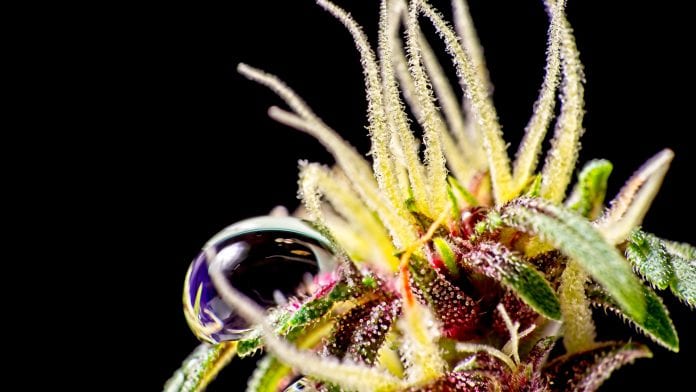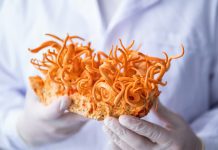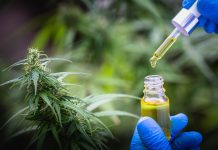
In a breakthrough for cannabis research scientists have discovered a cannabinoid in the cannabis plant that is potentially 30 times stronger than THC.
Cannabis has over 400 known compounds in the plant, of which around 150 have been recognised as ‘cannabinoids’. The most commonly recognised cannabinoids are THC and CBD due to their pharmaceutical properties.
Now, in an attempt to define the phytocannabinoid profile that characterises medical cannabis, a group of Italian researchers from the University of Modena and Reggio Emilia, the University of Rome, the University of Campania, and the Institute of Nanotechnology in Lecce, have discovered two new compounds: THCP (tetrahydrocannabiphorol) and CBDP (cannabidiphorol).
The team of researchers describe in the report, published in the journal Nature, how they have isolated the two new cannabinoids, of which, THCP binds to the CB1 and CB2 receptors of human’s endocannbinoid system.
The scientists suggest that this cannabinoid is potentially 30 times more potent than THC – the known psychoactive component of cannabis.
Medical Cannabis Network spoke to team researcher, Cinzia Citti, from the Institute of Nanotechnology about the new discovery.
New cannabinoids: THCP and CBDP
THC and CBD have both been characterised in scientific studies which have highlighted the beneficial pharmaceutical properties of the compounds.
In this study the authors note that they expected THCP has an even higher binding affinity for the CB1 receptor and a greater cannabimimetic activity than THC itself.
Citti said: “Our in vitro experiments proved that THCP has a high affinity for CB1 receptors, about 30 times higher than that reported for THC in the literature. Since the psychotropic activity is generally associated with the affinity for this type of cannabinoid, we could speculate that THCP is psychoactive.
“Also, in vivo experiments on animals showed that THCP has a cannabimimetic activity like THC. However, the actual biological effect on humans is still to be determined and only future pharmacological studies would either confirm or refute such hypothesis.”
The researchers analysed an extract of the low-THC cannabis variety called FM2 (ethanolic), provided by the Military Chemical Pharmaceutical Institute in Florence, and concluded that THCP has pain relieving effects as well as inducing hypomotility, catalepsy and decreased rectal temperature – all similar effects to THC.
The effects the of the compounds contained in cannabis on the human body are influenced by their alkyl chain (a group of carbon and hydrogen atoms chained together by single bonds).
Citti said: “THC and CBD are characterised by a particular chemical structure that shares a side alkyl chain with five carbon atoms in a linear arrangement. THCP and CBDP differ from them only for the length of this chain, which contains instead seven carbon atoms in the same linear arrangement, and the length of this chain is responsible for the increased affinity for CB1 receptor.”
When asked if Is CBDP similar to CBD in its pain relieving and anxiety inducing effects Citti noted that: “Because we do not have data on the biological activity of CBDP, I can only speculate. Given the similar behaviour of THC and THCP, we expect that also CBDP will show an activity similar to that of CBD probably at even lower doses, but this will be the goal of a future work.”
What does this mean for cannabis?
The authors speculate that THCP could be the reason for such variety in terms of effects from different strains of cannabis, stating that: ‘The presence of this new phytocannabinoid could account for the pharmacological properties of some cannabis varieties difficult to explain by the presence of the sole THC.’
Citti said: “The problem is that nobody has ever searched for these two compounds in cannabis. Maybe, the identification of THCP in other varieties could account for inexplicable effects not ascribable solely to THC.
“Once all pharmacological profile of THCP has been established, I can imagine that THCP-rich cannabis varieties will be developed in the future for specific pathologies.”
Determining the chemical profiles of a cannabis-based medicines
Citti said: “I firmly believe both of these compounds could have medical applications, but we are still very far from that reality. Further investigation is needed to understand not only the benefits, but also the risks for humans in taking these cannabinoids as a pharmacological treatment. Only future pharmacokinetics studies will disclose such information.
“The next step is to search for these cannabinoids in other cannabis varieties and determine the exact concentrations in order to understand the extent of their effect on humans. However, the process will be quite long, a number of pharmacological tests should be carried out on CBDP and THCP to assess their benefits and risks.
“Everything beyond our preliminary experiments represents only a speculation. Our main message is the importance to evaluate the exact chemical profile of a cannabis-based medicine and know each time the exact concentration of all active principles, otherwise it would be not reasonable to consider cannabis a medicine.”
The research is part of a funded project – UNIHEMP (Use of Industrial Hemp biomass for Energy and new Biochemicals Production) – which is funded by the Italian Ministry of Education, University and Research and the European Regional Development Fund.



















This really is a fantastic breakthrough for the medical community. Hopefully, it would lead to lower costs.